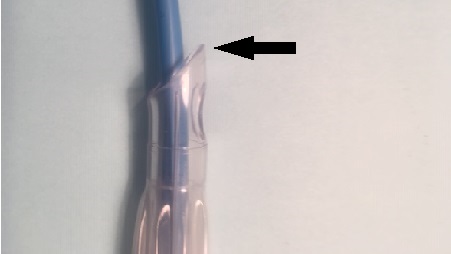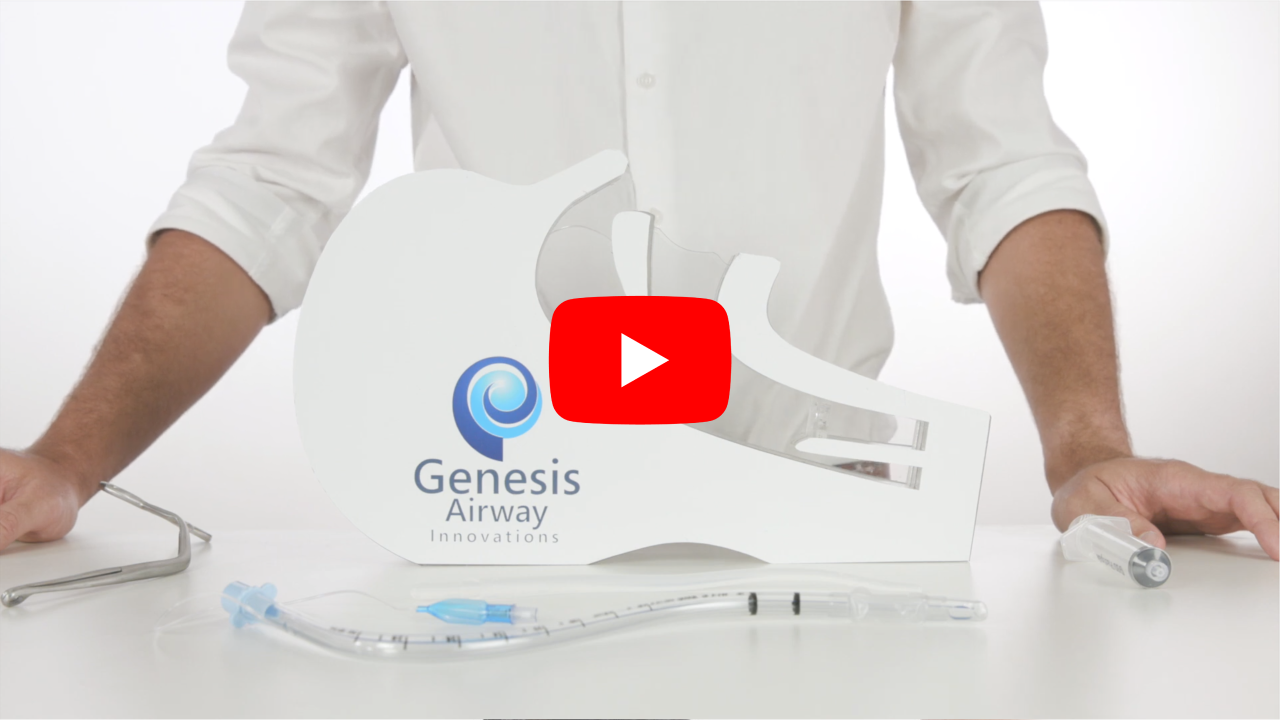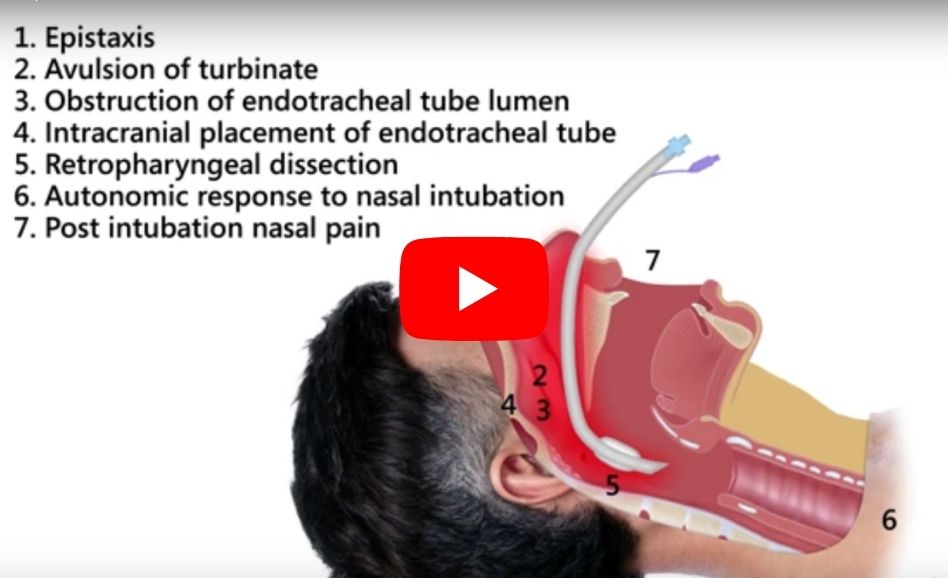
Obturating introducer for nasal endotracheal tubes
This novel innovation offers the benefits of a simpler, safer and more predictable nasal endotracheal intubation method.
Reduced incidence and severity of epistaxis to the same, or less than, the incidence when using a red rubber catheter.
Reduced incidence of nasopharyngeal soft tissue damage and nasal pain post intubation. The device eliminates the sharp edges associated with the bevel and at the end of an endotracheal tube, and creates a smooth atraumatic contour.
Simple to use. Passage of a bevelled endotracheal tube through the nasopharynx requires supervision and experience before complications can be minimized. This device makes passage through the nasopharynx a simple technique. If the catheter passes from the nasopharynx to the oropharynx so will the endotracheal tube.
Different sizes to fit different diameter endotracheal tubes. Range 5 – 8.0mm internal diameter.
The proximal end of the intubation device is manufactured to connect with an endotracheal tube with a posterior facing bevel that allows for easier placement of the endotracheal tube in the trachea without the need for rotation.
Soiling of the lumen of the endotracheal tube in the passage through the nasopharynx is prevented as the introducing device obturates the apertures of the endotracheal tube.
Most endotracheal tubes have left facing bevels designed to be safer passed through the right nostril. Using the introducer means that the most suitable nostril may be chosen to intubate.
The external diameter of the complex passed through the nose remains the same as the external diameter of the endotracheal tube. Use of a red rubber or modified urethral catheter increase the external diameter. Increasing external diameter is associated with an increasing incidence of epistaxis.
All Genesis airway endotracheal tubes have posterior facing bevels with a curved atraumatic tip shown to be safer when passed through the nasopharynx and to provide a greater initial success rate of intubation when railroaded over a bougie or fibreoptic scope.
All Genesis airway endotracheal tubes have high volume low pressure cuffs.
Genesis airway RAE endotracheal tubes sizes 8.0 - 5.0mm ID are made from soft PVC reducing nasal trauma and preventing the need for thermo-softening.
LARYNX

Annotation:
VC – vocal cords
AC – arytenoid cartilage
AF – aryepiglottic folds

Arrow indicating Gap between
bevel and bougie allowing
hang up on laryngeal structures.

Genesis endotracheal tube
with posterior facing bevel
and curved atraumatic tip
designed to prevent hang up
on laryngeal structures.
Suspected base of skull fractures
Bleeding diathesis
Our Obturating Introducer for Nasal Endotracheal Tubes is presented as a pack containing:
A nasal endotracheal tube with a posterior facing bevel
An introducer that mates with the endotracheal tube.

Obturating Introducer – Flexible reinforced

Obturating Introducer – PVC RAE
The appropriate sized endotracheal tube is selected for the patient.
The endotracheal tube is mated with the introducer.
The most patent nostril is selected and the introducer is lubricated and passed along the floor of the nostril and nasopharynx until the distal end of the introducer can be visualized in the mouth using a laryngoscope.
The distal end of the introducer is grasped with Magill’s forceps and delivered through the mouth. By pushing on the endotracheal tube distal to the nostrils and pulling the introducer through the mouth the distal end of the endotracheal tube is delivered into the oropharynx .The introducer is uncoupled from the endotracheal tube and removed. The endotracheal tube can then be passed into the trachea through using a laryngoscope.

GENESIS NASAL ENDOTRACHEAL TUBE
AND INTRODUCER DEMONSTRATING
METHOD OF CONNECTION
Sizes – Internal Diameter of tube:
REINFORCED FLEXIBLE PVC ETT WITH INTRODUCER
NASAL (RAE) PVC ETT WITH INTRODUCER
Units : Minimum Order Quantity 10 and Multiples thereof


